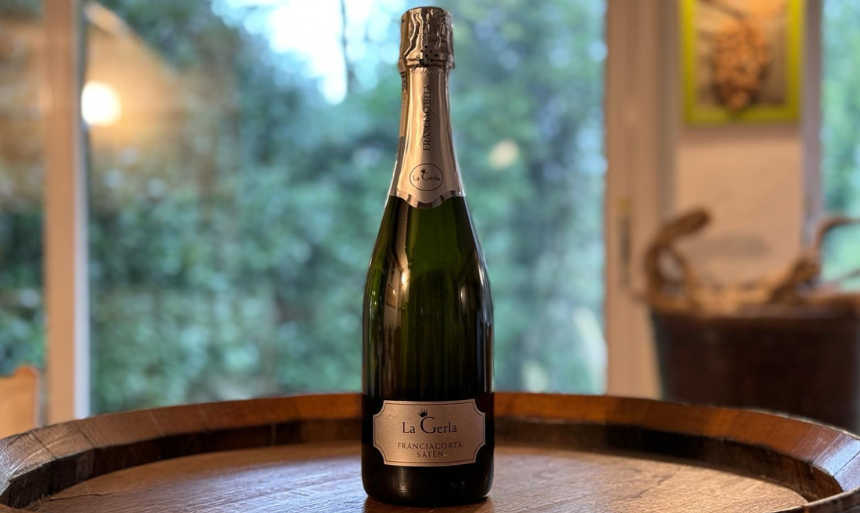How is Franciacorta Saten produced?
In this article we explain how Franciacorta Saten is made, what are the rules that regulate its production and what its production method is.
If you are interested in purchasing Saten, read this article to learn about the characteristics of this icon among Italian sparkling wines.
How is Franciacorta Saten made?
Franciacorta Saten is a particular wine of the D.O.P. (D.O.C.G. in the Italian classification) Franciacorta, one of the most important Italian sparkling wines. We wrote "particular" because Saten (Satèn in the correct spelling) has special, singular, original and distinctive characteristics, such as to differ from the rest of the types of the Appellation. These differences do not only refer to the organoleptic properties of this wine, but also to the rules that regulate its production.
For this reason, we can say that:
➡️ Franciacorta Saten is a special type of wine of the D.O.C.G. Franciacorta.
Below, let's see why it's so special.
Which grapes are used for the production of Franciacorta Saten?
The first fundamental aspect that distinguishes Saten from the other main types of Franciacorta, the basic version and the Rosé version, is its ampelographic base, i.e. the vines that are used in its production.
For all other versions of Franciacorta these vines can be used: Chardonnay, Pinot Noir and Pinot Bianco (up to a maximum of 50%). Franciacorta Saten, on the other hand, has a different ampelographic base.
➡️ Franciacorta can only be produced from Chardonnay and Pinot Bianco grapes (maximum 50%). Pinot Noir grapes cannot be used.
It is impossible to find a Saten obtained from Pinot Noir grapes. Chardonnay is the reference vine and is the prevalent one, while Pinot Blanc is its secondary vine.
What are the rules for the production of Franciacorta Saten?
Below, we see which rules regulate the production of Franciacorta Saten and which aspects of the winemaking process differentiate it from the rest of Franciacorta wines.
What sparkling method is used to produce Franciacorta Saten?
The production method of Saten is the same as the other types of Franciacorta. All types of sparkling wine of the D.O.C.G. Franciacorta must be produced with the method of refermentation in the bottle.
➡️ Franciacorta Saten is produced only with the Classic Method or Champenoise Method.
But, as we wrote previously, Saten is a special type of Franciacorta and, despite being made with the same production method as the other versions, it has some specific and very important production traits.
To begin the refermentation of the base wine the so-called liqueur de tirage is used. The liqueur de tirage is a particular mixture of wine and sugars. The quantity of sugars to be used for the secondary fermentation of Saten is strictly regulated and lower than that of other types.
➡️ for Franciacorta Saten a maximum of 20 gr/litre of sugar can be used at the time of secondary fermentation.
For the other Franciacorta wines this limit is set at 24 gr/litre. What does this difference mean? Less pressure in the bottle.
➡️ Franciacorta Saten must have a pressure of no more than 5 atmospheres.
The other Franciacortas, however, also reach 6.5 atmospheres.
This depends on the different quantity of sugars used to start the second fermentation. Less sugar means less carbon dioxide generated and, therefore, less pressure in the bottle. Remember that secondary fermentation involves the transformation of sugars into carbon dioxide.
Finally, the reduced use of sugars is also connected to another peculiarity of Saten:
➡️ Franciacorta Saten can only be produced in the brut version.
Foto di Lomig su Unsplash
How long does Franciacorta Saten refine?
Another distinctive feature of Franciacorta Saten is the period of refinement on the refermentation yeasts, following the second fermentation.
➡️ Franciacorta Saten must refine on refermentation yeasts for at least 24 months.
For basic Franciacorta wine this limit is set at 18 months, 24 months also for Rosé.
What wine is Franciacorta Saten?
Given all these production peculiarities, Saten stands out from the rest of Franciacorta also for its organoleptic qualities.
Specifically, Saten has a softness that cannot be found in other versions of Franciacorta. These characteristics are its real trademark, the one that the consumer notices on the palate. And it is also the best-known trait. It has a straw yellow/golden colour, aromas typical of refermentation in the bottle, such as hints of bread crust and yeast, enriched with fruity/citrus notes.
Now that you know everything about Franciacorta Saten, it's time to buy it in our online wine shop.
If you liked our article and if you want to continue to receive news, updates and curiosities about the world of wine, subscribe to the Wineshop.it wine newsletter. Lots of content and offers await you!










